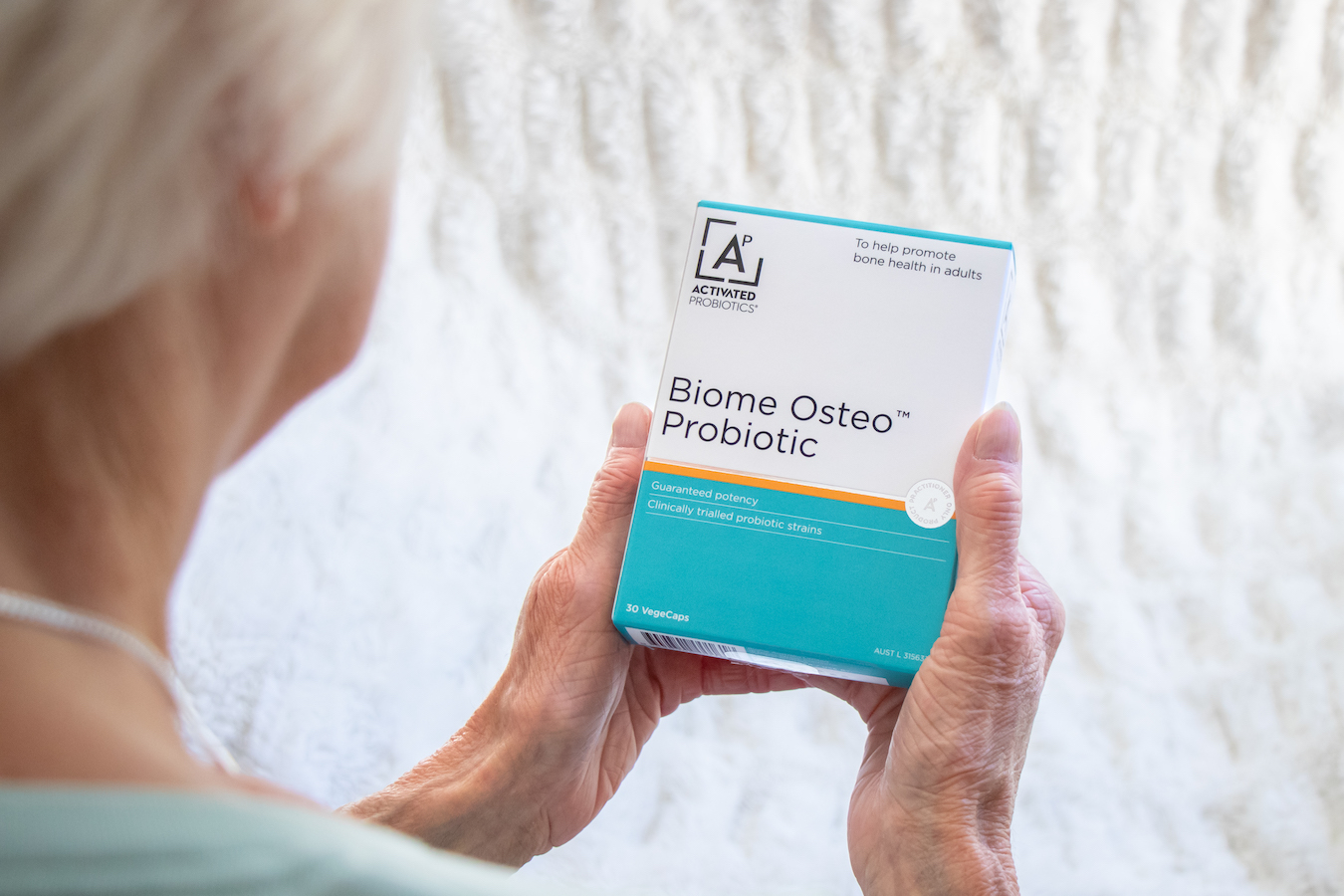


GUT MICROBIOME
BY BENJAMIN MAKEHAM February 10, 2022
Our bone health is determined by our bone mineral density and the strength of our bones.

Throughout childhood and adolescence, our bodies are building bones and increasing their density to create a strong skeleton. These early years are pivotal for the development of a strong skeleton. Once we reach early adulthood, this process stops and our bones maintain the density they were able to achieve for the next 10-30 years.
Eventually, however, our bones begin to lose their density naturally. This starts to happen, on average, after the age of 45. During this time period, it is essential to reduce the rate of bone density loss as we can no longer build new bone.
The focus is on preserving bone health to prevent our bones becoming weak, losing too much density, and developing osteoporosis.
While traditionally the focus has been on calcium supplementation, enhancing the gut-bone axis is a new approach which may be able to protect our bone health as we age. The gut-bone axis refers to the gut microbiome’s communication with bone tissue, with messages being carried by the immune system (1)
There are specialised cells in bone tissue which are responsible for the degradation of bone, called ‘osteoclasts’. Their activity increases as we age because they respond to age-associated inflammation.
Enhancing the health of the gut microbiome can help to dampen the inflammatory messages that increase bone breakdown - through its effects on the immune system.
The immune system produces the inflammatory messages that alter osteoclast activity and the rate of bone breakdown. As 70% of the immune system is found just below the surface of the gut, the gut microbiome is in direct communication with immune cells and can change the inflammatory messages they produce.
By altering the types of inflammatory messages produced by the immune system, the gut microbiome can reduce the activity of osteoclasts and thus help to preserve bone mineral density.
Biome Osteo™ Probiotic is a combination of three carefully chosen probiotic strains with the ability to preserve and maintain bone health by reducing inflammatory signals produced by the immune system (2).
Biome Osteo™ Probiotic has been studied in a randomised double-blind placebo-controlled clinical trial where women who took the probiotic had significantly better bone health after 12 months of supplementation, compared to placebo (3).
